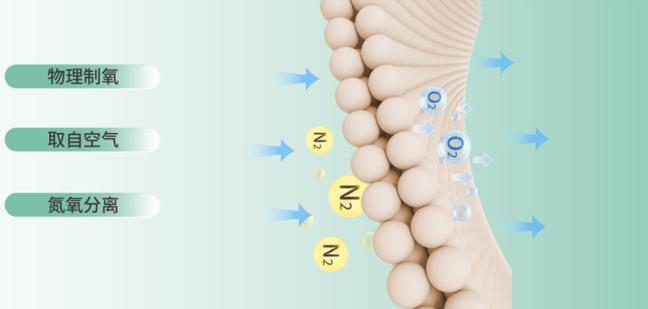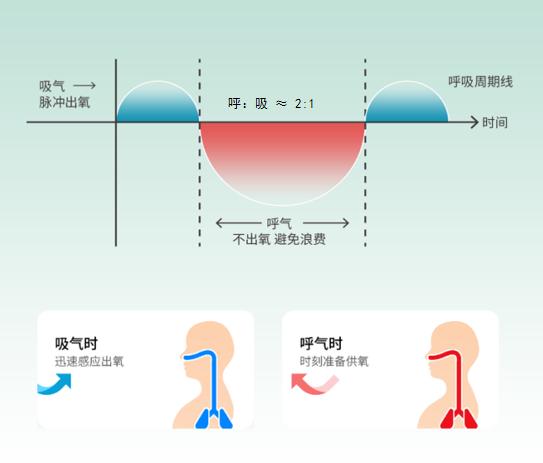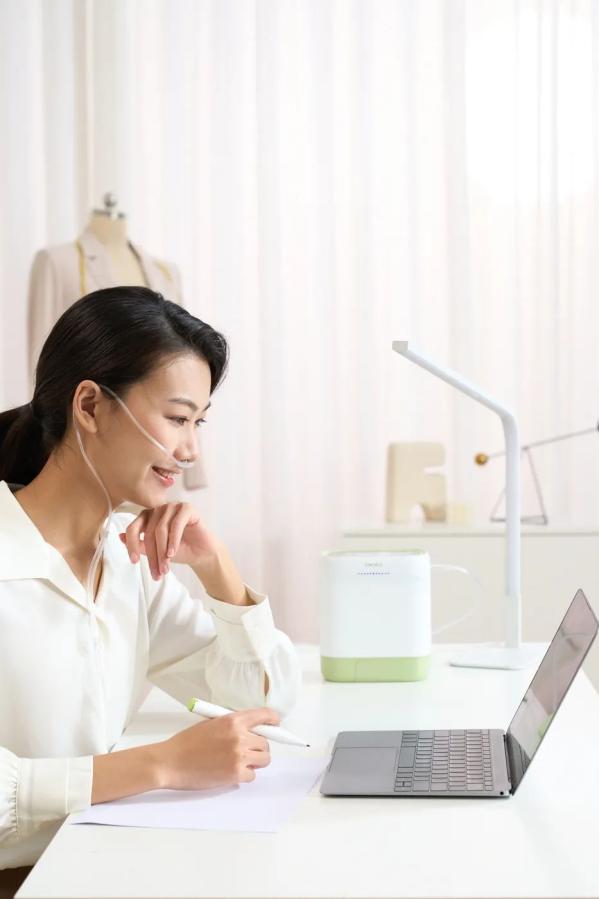With the relaxation of control policies, the number of people infected with COVID-19 has increased dramatically. Although the virus has become less virulent, there is still a risk of chest tightness, shortness of breath, and respiratory distress for the elderly and those with severe underlying diseases. The National Health Commission has emphasized in a press conference, “Treatment for COVID-19 should be more proactive, especially for elderly individuals with underlying diseases who should receive early intervention to prevent the deterioration of their condition, including comprehensive treatment such as antiviral therapy, oxygen therapy, and traditional Chinese medicine.”
Oxygen therapy is a timely intervention that alleviates the discomfort caused by hypoxia. Kangbashiqiao District in Inner Mongolia has provided oxygen generators or other portable oxygen devices to people who were quarantined at home through street communities, making it convenient for them to receive oxygen therapy at home. Under current circumstances, do ordinary families need to equip themselves with oxygen generators? Beoka, with more than 20 years of professional experience in the field of rehabilitation, will answer your questions.
Classification of household oxygen generators
The most common household oxygen generators are based on molecular sieve oxygen generators, which use molecular sieves as adsorbents. Through the circulation process of pressurized adsorption and depressurized analysis, oxygen is separated and extracted from the air in a healthy and harmless way, and high concentration oxygen is output.
According to the mode of oxygen supply, molecular sieve oxygen generators can be divided into continuous oxygen supply and pulse oxygen supply. The former can only be used when plugged in at home. The oxygen generator continuously outputs oxygen, but the utilization rate of oxygen is low, and prolonged use can lead to dry nasal passages. Pulse oxygen supply uses a high-sensitivity respiratory sensor to supply oxygen when the user inhales, and stops supplying oxygen when the user exhales. The utilization rate of oxygen is higher, and the output is more gentle and efficient.

Technical standards for household oxygen generators
Oxygen flow rate
The oxygen flow rate refers to the rate of oxygen output per minute from the oxygen generator. For continuous oxygen generators, 1L, 3L, and 5L generators are common. The 5L generator means that the oxygen output per minute is 5 liters. However, in fact, the oxygen produced by the oxygen generator is wasted when the user exhales. In contrast, the pulse oxygen generator only supplies oxygen when the user inhales. For example, a pulse oxygen generator with an output of 0.8L/min is equivalent to a continuous oxygen generator outputting 3-5 liters per minute.
Oxygen concentration
The oxygen concentration is the percentage of oxygen in the gas output of the oxygen generator. When selecting an oxygen generator, it is important to pay attention to the concentration of oxygen at the highest oxygen flow rate. It is recommended to use oxygen generators with a constant oxygen concentration of more than 90%.
Core hardware of household oxygen generators
The molecular sieve oxygen generator’s key components are the molecular sieve and the compressor. Reliable core hardware can ensure that the oxygen generator runs efficiently for a long time, and stabilizes the oxygen output concentration for a prolonged period of time. It should have a strong drive and generate less heat with a longer service life.

In addition to the above parameters, when selecting a backup oxygen generator, people should also pay attention to the convenience of operation, after-sales service, and whether it is lightweight and portable, does not take up space, and can be used in various settings such as outdoor, on business trip, or on travel. Traditional oxygen generators are mostly bulky and cannot be carried around. However, with the rapid development of technology, Beoka’s portable oxygen generator for health care is about 5% the size of a traditional 5L oxygen generator, which is compact and portable. It uses French imported molecular sieves and high-performance miniature compressors, has a pulse output equivalent to 3-5L, and has a constant oxygen concentration of 93%±3% in five modes.

Beoka’s portable oxygen generator for health care is the size of a palm, can be carried with one hand, shoulder-slung, or double-shoulder slung, and can be used for hiking and traveling in high altitude regions up to 5000 meters, as well as for elderly people at home or going out. With this oxygen generator, the elderly no longer need to stay indoors all day and can easily go for a walk with their children and grandchildren, enjoying a more happy and quality life in their old age.
Post time: Jun-08-2023









